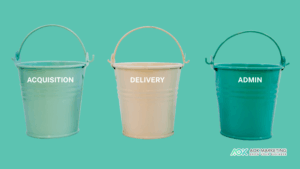In the dynamic world of ecommerce, data is king. With an overwhelming amount of metrics at our fingertips, it can be challenging to know which ones are crucial to track and analyze for your online business’s success. From website traffic to conversion rates, shopping cart abandonment rates to average order value, each metric offers a unique insight into your online store’s performance.
However, amidst this sea of numbers and charts, there’s one ecommerce metric that often gets overlooked but is absolutely integral to the long-term success of your venture: the Customer Lifetime Value (CLV).
This powerful metric not only gives you an understanding of how much repeat business you can expect from your customers but also helps you construct informed decisions regarding customer acquisition and retention strategies.
In this blog post, we will delve deep into the importance of CLV, why it is an ecommerce metric you can’t ignore, and how focusing on this can drive your ecommerce business toward greater profitability and success.
Stay tuned as we unravel the mystery of Customer Lifetime Value and its significant impact on your ecommerce venture.

Definition of Customer Lifetime Value (CLV)
Customer Lifetime Value, often abbreviated as CLV or LTV, predicts the total net profit a business can make from any given customer. It’s a measure of a customer’s worth over time, and it’s calculated by multiplying the average purchase value, average purchase frequency rate, and average customer lifespan.
CLV gives you an idea of how much revenue you can expect one customer to generate over the course of the business relationship. The more prolonged a customer continues to buy from your business, the greater their lifetime value becomes.
Why CLV is Crucial for Ecommerce Businesses
Better Marketing Strategy: Knowing the CLV helps in budgeting the marketing spend. If the cost of acquiring a new customer (CAC) is less than the CLV, then the marketing strategies are working well. If not, it’s time to reevaluate.
Improves Customer Retention: A high CLV indicates customers are satisfied with your products or services. This means they’re likely to continue doing business with you, leading to higher customer retention rates.
Profitability Measurement: CLV is also an essential metric for measuring profitability. A high CLV suggests that customers are making repeat purchases, which could lead to higher profits.
Helps in Segmentation: CLV can help identify high-value customers. These are the customers who are spending more and buying frequently. Once identified, businesses can focus on retaining these customers and even finding more customers like them.
In a nutshell, focusing on CLV can help ecommerce businesses create more targeted and effective marketing strategies, improve customer satisfaction and retention, and ultimately drive more sales and revenue. By understanding this powerful metric, ecommerce businesses can make smarter decisions that contribute to long-term success.
Understanding How to Calculate Customer Lifetime Value (CLV)
Calculating the Customer’s Lifetime Value is not as complicated as it may seem. The basic formula for calculating CLV is:
CLV = (Average Purchase Value x Average Purchase Frequency) x Average Customer Lifespan
Let’s break down each component of this formula:
Average Purchase Value (APV): This is the average amount that customers spend when they make a purchase. You can calculate the APV by dividing your total revenue in a specific time period by the number of purchases over the same period.
Average Purchase Frequency (APF): This is the average number of times a customer makes a purchase within a given time period. You can calculate APF by splitting the number of acquisitions by the number of unique customers who made those purchases.
Average Customer Lifespan (ACL): This is the average length of time that a consumer continues to make purchases from your business. It can be calculated by determining the average time between a customer’s first and last purchase.
By multiplying these three factors together, you get the Customer Lifetime Value. This figure provides an estimation of the total income you can expect from a single customer over the course of their relationship with your business.
It’s important to note that there are more complex models to calculate CLV that consider factors like the cost of customer acquisition, discount rates, and customer churn rate. However, the basic formula gives you a good starting point to understand this crucial ecommerce metric.
The Impact of Customer Lifetime Value on Ecommerce Business
Customer Lifetime Value (CLV) is a powerful metric that reflects the total amount a customer is expected to spend in your store during their lifetime as a customer. This metric has a profound impact on your ecommerce business, specifically when it comes to profitability and growth.
How CLV Affects Business Profitability
Understanding and optimizing for CLV can significantly improve your business’s bottom line. Here’s how:
Effective Marketing: When you know your customers’ CLV, you can make more informed judgments about how much funds to invest in acquiring new customers and retaining existing ones.
Customer Retention: CLV gives insights into which customers are most valuable over time. These understanding can help you focus your efforts and resources on retaining these high-value customers.
Profitability Measurement and Forecasting: CLV allows you to measure the profitability of your customers over the long term. It can also help forecast future profitability based on this historical data.
Improved Product Returns Management: Interestingly, product returns, which are often viewed negatively, can actually contribute to increasing CLV. By providing a smooth and hassle-free returns process, businesses can improve customer satisfaction, leading to higher CLV.
Real-Life Examples of Companies That Use CLV to Drive Growth
Numerous successful companies leverage the power of CLV to drive their growth.
For instance, Amazon is known to focus extensively on CLV. They achieve high CLV through exceptional customer service, a vast product range, and personalized recommendations. This customer-centric approach has been a key driver of their impressive growth.
In conclusion, Customer Lifetime Value is not just a metric; it’s a philosophy that puts the customer at the heart of your business. By focusing on increasing CLV, you’re investing in long-term customer relationships, which is beneficial for sustainable growth and profitability.
Strategies to Increase Customer Lifetime Value
Increasing the Customer Lifetime Value (CLV) is a crucial goal for any ecommerce business. It not only boosts your profits but also strengthens your relationship with customers. Here are four practical strategies to increase CLV:
Personalization: Personalize the customer experience based on their individual preferences and purchase history. Use data-driven insights to provide relevant product recommendations, create personalized marketing messages, and tailor the shopping experience to each customer’s needs and interests. For example, if a customer frequently buys organic skincare products, you might send them special offers on new organic skincare items.
Customer Loyalty Programs: Implement customer loyalty programs to encourage repeat purchases. This could include incentives like points for every dollar spent, which can be redeemed for discounts or free products. For instance, Sephora’s Beauty Insider program rewards customers with points for each purchase, leading to exclusive discounts and gifts, thus promoting repeat business.
Quality Products and Services: Delivering high-quality products and services is essential for customer satisfaction, which in turn promotes repeat business. Ensure that your products meet or exceed customer expectations, and continually look for ways to improve.
Excellent Customer Service: Building a strong relationship with your customers is key to increasing CLV. Provide excellent customer service by being responsive, helpful, and friendly. This includes offering easy returns and exchanges, providing swift assistance when issues arise, and showing appreciation to your customers.
By applying these strategies, you can not only increase the lifetime value of your customers but also foster a loyal customer base that will drive your ecommerce business’s success. Remember, increasing CLV is an ongoing process that requires consistent effort and evaluation. Keep your customers at the heart of your business operations, and they’ll surely remain with you for the long haul.
Tools to Help Measure and Improve Customer Lifetime Value
In the digital age, numerous tools can help ecommerce businesses measure and improve Customer Lifetime Value (CLV). These tools provide valuable insights into customer behavior, purchase patterns, and engagement, which are crucial for developing effective strategies to boost CLV. Here’s an overview of some of these tools and their capabilities:
Google Analytics: This free-to-use tool provides in-depth insights into customer behavior on your website. It has a dedicated section for CLV that offers data about user value over time, helping you identify high-value customers and segments.
Kissmetrics: A powerful customer analytics and engagement platform, Kissmetrics allows you to track CLV and understand what drives it. Its capabilities include tracking customer behavior across multiple devices and channels, segmenting customers based on behavior, and automating customer engagement through personalized messages.
Optimizely: Known as an experimentation platform, Optimizely helps you test different elements of your website or app to see which ones contribute to higher CLV. By using A/B testing and personalization, you can optimize the customer experience to increase loyalty and CLV.
Zendesk: Zendesk is primarily a customer service platform, but its rich data and analytics can also support CLV improvement efforts. It provides insights into customer satisfaction and engagement, which are key factors affecting CLV.
Adobe Analytics: This advanced analytics tool provides real-time analytics and detailed segmentation across all marketing channels. It includes predictive analytics capabilities, which can help forecast CLV and guide decision-making.
Yotpo: Yotpo is a user-generated content marketing platform that can indirectly help boost CLV. It allows you to collect and leverage customer reviews, photos, and Q&A to build trust and foster customer loyalty.
Remember, the key to effectively using these tools is to understand your customers and their journeys. Then, use these insights to refine your strategies and improve the customer experience.
Conclusion: The Power of Customer Lifetime Value in Ecommerce
In conclusion, the importance of Customer Lifetime Value (CLV) in ecommerce cannot be overstated. It provides critical insights into your customers’ spending habits over their lifetime, enabling you to make informed decisions about marketing expenditure, customer retention strategies, and product management. A focus on CLV can significantly boost your business’s profitability and encourage sustainable growth.
If you have been primarily fixated on acquiring new customers, it’s time to shift some of your focus toward maximizing the value of existing customers. Remember, retaining a customer is generally more cost-effective than acquiring a new one.
It’s time to take a closer look at your current approach to CLV. Are you actively tracking this metric? Are you implementing strategies to increase it? If not, now is the perfect time to start.
Consider the strategies we’ve discussed, such as personalization, customer loyalty programs, providing quality products and services, and offering excellent customer service. Also, explore the tools mentioned to help you measure and improve CLV.
Start today by focusing on increasing your toward. The long-term benefits for your ecommerce business will be well worth the effort!
About The Author
Jana Legaspi
Jana Legaspi is a seasoned content creator, blogger, and PR specialist with over 5 years of experience in the multimedia field. With a sharp eye for detail and a passion for storytelling, Jana has successfully crafted engaging content across various platforms, from social media to websites and beyond. Her diverse skill set allows her to seamlessly navigate the ever-changing digital landscape, consistently delivering quality content that resonates with audiences.





